Today I went to visit my third graders in their general education classroom. When I arrived they were in the computer lab creating slide shows on power point to present their information they compiled from their 50 states project. I thought that this was interesting, because I know many adults that are unable to create a powerpoint. Beyond the content they were learning I was more focused on the student's behavior. For the most part I observed what I had been expecting to see; that there were my typical students who did a good job following directions and listening. There were also the normal students who were misbehaving and off task.
However I did notice that there were a few students who were normally very quiet in the gym, but were very outspoken and active in the classroom. The teacher commented to me that this was normal for these students, and that they were "un-athletic" but were very "book smart". I wasn't sure how to take this comment, because I feel that your athletic ability or academic intelligence should not be relevant to your experience in Physical Education class. I pride myself in including all of my students, not just those who are skilled movers. This was an important note that I will be taking with me back to the gym, because I don't want students to feel that they can't express themselves in the gym simply because they don't think they are "athletic".
My goal with this blog is to enhance the physical wellness of our youth through uncoventional activities that will peak the interest of children and make lifetime exercise a priority in their lives.
Showing posts with label EDU 355 lab. Show all posts
Showing posts with label EDU 355 lab. Show all posts
Tuesday, May 1, 2012
Tuesday, April 24, 2012
Field Experience Day 9 3rd Grade 4/19/12
Skill Themes and Student Abilities
Working on our volleyball skills again today was a challenge due to the way I had the skill progressions planned. I had planned that the children would self toss the ball and then forearm pass it up and catch it. After discussing the progressions after the lesson, I came to the conclusion that I should have moved around the order in which I chose progressions. This was a great wake up call, because it had me start thinking in a different manner. While we already know that students need guidance with learning new skills, sometimes we forget the smaller details that can have a large impact on our success or failure.
That being said I didn't take into account the automatic movements that I already possess when I was coming up with the activity. I didn't even think that the motion of tossing a ball up and putting the hands in the proper position would be difficult, but it was. The students struggled with getting their hands back into position to bump the ball, and in hind sight I would have rather them done this activity with a partner throwing the ball to them. Yet another learning point that I will take away from this experience.
Field Experience Kindergarten Day 9 4/19/12
Reflection of Lesson
Today was my final day working with the Kindergarten class in the gym, and was also our first day starting the volleyball unit. With the volleyball unit, the host teacher has split the class periods to focus on fitness as well. This works well, because while the students are still gaining exposure to the volleyball skill themes, they are also learning about fitness and its benefits. I really liked the idea of splitting up the class time to incorporate fitness, because the students only have PE once a week, so this gives them the opportunity to cover more material then they might have had the two not been combined.
We did the fitness portion of the class utilizing 4 stations set up in each quadrant of the gym, separated by the crossing volleyball nets. This allowed for easy to understand transitions as well as maintaining visibility of the students at all times. One thing that I would have changed would be to not have had the students using the jump ropes, because very few of the students were actually able to do the skill properly, and it wasn't feasible to have a teacher there correcting every group of students.
With the volleyball portion, we focused on the overhand smash, because it worked on the students hand eye coordination as well as being a valuable skill in volleyball. To make the skills easier to perform, we had the students use beach balls rather than an actual volleyball. This made the balls much more manageable and the students were able to perform the cues as well.
Today was my final day working with the Kindergarten class in the gym, and was also our first day starting the volleyball unit. With the volleyball unit, the host teacher has split the class periods to focus on fitness as well. This works well, because while the students are still gaining exposure to the volleyball skill themes, they are also learning about fitness and its benefits. I really liked the idea of splitting up the class time to incorporate fitness, because the students only have PE once a week, so this gives them the opportunity to cover more material then they might have had the two not been combined.
We did the fitness portion of the class utilizing 4 stations set up in each quadrant of the gym, separated by the crossing volleyball nets. This allowed for easy to understand transitions as well as maintaining visibility of the students at all times. One thing that I would have changed would be to not have had the students using the jump ropes, because very few of the students were actually able to do the skill properly, and it wasn't feasible to have a teacher there correcting every group of students.
With the volleyball portion, we focused on the overhand smash, because it worked on the students hand eye coordination as well as being a valuable skill in volleyball. To make the skills easier to perform, we had the students use beach balls rather than an actual volleyball. This made the balls much more manageable and the students were able to perform the cues as well.
Wednesday, April 18, 2012
Field Experience Day 8 3rd Grade 4/17/12
Management Strategies
In the lesson today with the 3rd graders, the gym
was split into four distinct quadrants by two crossing nets that spanned the
entire gym. This naturally set the class into a stations setting, and the
lesson was based accordingly. The quadrant setup allowed me to easily manage
the class within their stations, because I was able to quickly and easily see
what was going on throughout the lesson. I was able to monitor behavior and
participation as well as give individual feedback quite easily and efficiently.
I think that stations are a great way to manage a classroom,
because it allows students to work on their task without having the entire
class watching them. It also breaks up the class into many different activities
adding in a variety of tasks. This is the same style of classroom management
that I used and plan to use again to complete my assessments. Having success in
the lesson furthered my belief that stations can be effective when utilized
properly.
Field Experience Day 8 1st Grade 4/17/12
Skill themes and student abilities
Today I worked with a different group of students due to
state testing changes in the schedule. This was a good thing though, because it
allowed me the opportunity to work with a 1st grade class, and see
the differences in abilities of a different age group. While their skills weren’t
far and above that of the Kindergarten class that I normally work with, there
were distinct differences. For instance, their coordination levels were
developed more, and they were able to move with more ease and fluidity as opposed
to the Kindergarteners.
One thing that was similar was that there was little
differentiation between the skill themes worked on. The teacher explained to me
that he doesn’t differentiate the skill themes between the two groups, but
instead he simply looks for more proficiency of the student’s movements. I wasn’t
sure how to feel about this, because while their skill levels weren’t
drastically different, I did expect there to be differentiation between the two
lessons.
Thursday, March 22, 2012
Field Experience Day 6 3rd Grade 3/22/12
Reflection of the Lesson
This lesson was the one the validated all of my hard work and perseverance. I have never had such a good overall lesson in my life, and it gave me such a good feeling when I was done that I have still not stopped smiling. Once again I was in charge of the class and my master teacher was merely acting as an assistant. We did a lesson similar to the one that we did with the kindergarten group, except we added in different objects as targets, such as rubber chickens and pigs, large dinosaurs, and a giant stuffed bulldog. To build further on the lesson, each target and object was given a point value, and the students were required to run to a back board and add up their point totals as they went. This was an easy modification that allowed us to bring in their regular classroom materials and incorporate them into our lesson.
After the first round of throwing, the students were sent out to reset all the targets and pins, as well as to gather as many objects to throw. When all the targets and objects were reset, the students waited in their lines and I walked by to see how many objects they had retrieved. Upon walking by I noticed a set of girls who had very few throwing objects in their barrel and asked the class if anyone with a lot of objects would be willing to give them some extra ones. Another group readily volunteered their equipment to the other group would have a better chance to earn points.
Field Experience Day 6 Kindergarten 3/22/12
Skill Themes and Student Abilities
Today was the start of our Frisbee/throwing unit in the kindergartener class. We had a main activity that was geared towards having the students get as many possible different throws in in the period as possible. There were lines marked off for the students to be paired off and a line that they would be throwing behind. Instead of having just one target, there were over 50 pins/targets set at different distances and of varying sizes. Also to add spice to the lesson, there were different objects set up top of the flat pins that the students could aim at.
While the children enjoyed being able to try and knock down the different targets, this gave the master teacher and I the ability to assess their different throwing abilities. Each set of students had a barrel in front of them with many different sized balls and Frisbees to throw at whatever target they chose. Through this activity we were able to give corrective feedback to each and every student as they threw the different objects. This was good, because while there were some students who could throw the balls, they might have had trouble with the Frisbees or vice versa. The individual attention allowed for specific corrections while not singling any students out. I thought that this way of assessing and correcting was absolutely perfect and there wasn’t a single thing I would change. Overall it was a very productive and fun lesson.
Tuesday, March 20, 2012
Field Experience Day 5 3rd Grade 3/15/12
Knowledge of the Students
I have been given the reigns of this class, and with great pride I am making my best attempts at becoming their teacher. I feel like I am steadily getting to know each and every one of my students on many different levels. I am learning names, backgrounds, abilities and attitudes. This is making things much easier and effective when deciding who should be working together, and which students are going to perform stronger in different activities. Since this class does a lot of working with partners and groups, knowing how to quickly choose teams/groups makes transitioning between tasks much smoother.
Dealing with the behavior issues in this class takes more effort than anything else that goes on during a lesson. As I have stated before there are a handful of students in this class that are known to try and poison the group through misbehaving. This week I used my knowledge of the students to strategically place these certain students in certain groups where I know they will be surrounded by positivity and other students who are going to keep them on task. Since we did a stations style activity today, the knowledge of the students was vital in the lesson going as effortlessly as it did. I now fully understand the importance of learning as much about my students as I can.
Field Experience Day 5 Kindergarten 3/15/12
Curriculum and NYS Standards
The group was then split up into groups of 4 with 4 areas already set up around the gym with a trash can filled with basketballs in each area. The game was squirrels and nuts, and the object of the game was to have the first student in line run to another groups “nest” and steal a nut, dribbling it back to their nest and putting it in the can. When they returned the next squirrel could run to any nest and so on. This game, while simple, created such a great sense of community amongst the students and many other good attributes. The teacher even commented about the standards and how we are meeting them to some of the students. I thought that it was great that the teacher was informing the students why we do what we do and how it benefits them.
Hooping Around the Pond
Explain three important benefits of hoop play.
Hoop play helps to develop hand eye coordination as the students maneuver the hoop around their body. It also works on developing their foot eye coordination. The main benefit in my eye’s woud be total body awareness, because they are forced to coordinate their entire body to effectively move the hoop around.
Hoops can help younger learners to learn and master colors, by having multiple different colored hoops set up around the gym, calling out a color and the students would have to run and stand in that color. You could also put a number in the middle of the hoops and the students would have to find the corresponding number that is called out by the teacher. The teacher could then take this a step further and have groups of students use the numbers in the hoops to do addition and subtraction problems. i.e. if they are standing in a one and then move to a four they would then have to find the number 5 and stand in that hoop.
Describe how hoops can be utilized to promote growth in the affective domain.
Cooperation and teamwork are easily worked on through hoop play. If there are 3 yellow hoops out on the floor and the teacher yells out yellow, all the students would have to work together to fit into that colors hoops. At first the teacher could start out with multiple different hoops of the same color and then slowly remove certain hoops making fitting into the hoops more difficult. This will create a sense of teamwork by having the students work together to figure out how to get everyone in the hoop together.
Utilize the internet to gather information about ponds and related ecology to use in you field experience teaching or future teaching.
Having a vast amount of animals and organisms living in the same space creates a sense of balance as well as give and take. Using the analogy of students “living in the same pond” could teach them about cohabitating. This sense of sharing is vital for any child to use, and tossing in animals like frogs and fish would make creating games and scenarios easy around a pond theme.
Monday, March 19, 2012
Imagination lab
For this situation I would choose a superhero theme, with the first station being the Incredible Hulk area where students would work on powerful strength movements. These movements could include a box jump, to work on the powerful leg muscles. Another could be medicine ball throwing.
Another station would be the Superman station where kids would work to be faster than a speeding bullet. This station would be a sprinting station where kids can take the explosive power that they just worked on in the previous and put it into motion through running. The sprinting station will work on their anaerobic explosive power.
Identify people that are famous for use of imagination and creativity such as Einstein, Picasso, and Bach.
Steve Jobs is known for being a creative innovator, and he dedicated most of his life to pushing the boundaries of technology and thinking outside of the box. He created and designed products that were often looked at as awkward and strange, and yet over the years Apple has become a technology powerhouse with groundbreaking products.
Design a rubric for assessing the acting-out of inanimate objects by students in small groups as described in the activity close of this lab.
Students participation
4 – Student is actively participating during the whole activity.
3 – Student participates, but does so with little effort.
2 – Student participates, but fades in and out throughout the activity.
1 – Student doesn’t participate at all during the activity.
Movements and Sounds
4 – Student’s actions and sounds are both realistic and done with enthusiasm.
3 – Student’s actions and sounds are good enough to guess, but lack of enthusiasm exists.
2 – Student only performs a few actions with little or no sound
1 – Student doesn’t perform any movements or sounds
Cognitive and Affective involvement
4 – Student carefully thinks about movements as well as works well with other group members.
3 – Student thinks little about movements and works only slightly with other group members.
2 – Student doesn’t think about movements and rarely helps/works with group members.
1 – Student isn’t involved in the process or group at all.
Sunday, March 18, 2012
Parachuting
Find information on the history of the parachute and how a parachute works.
The first sketches of parachutes date all the way back to 1495 when the great mind of Da Vinci drew them among his many other ahead of their time designs. Similar to Da Vinci’s design, a man by the name Fauste Veranzio created a similar contraption that he used to jump from the Tower of Venice. The design of a parachute works simply to slow the downward movement of whatever it is supporting as it falls. It creates drag against the wind and slows down the fall rate and is made of a light weight material that is meant to expand and trap as much air as possible.
Create a parachute routine composed of various parachute activities learned in class.
Getting the students comfortable holding and maneuvering the parachute is ideal, so to start we will start with the crazy whirlpool effect. Each student will shake their arms up and down as quickly as possible to create wild ripples across the parachute. Next we will create an air dome. The teacher will count to three and on three the students will raise their arms up quickly and then drop down all the way to the floor and sticking their heads underneath as the parachute creates a large dome effect overhead. They will do this again but this time they will jump underneath sitting their bottom on the edge. The next activity will be popcorn, where students will toss a few foam balls into the center moving as rapidly as possible to dislodge the balls from the center.
Practice a yoga routine for a week, and keep a journal of how you feel.
Doing yoga is a great way to relax and get a great exercise routine in. I have been doing yoga at my work for some time now, and I feel better doing this than spending extra hours in the gym. If you practice yoga regularly many people will claim a much more relaxed and overall smoother daily life, and from my experiences this is very true. You can build strength, flexibility while relaxing at the same time.
Use pictures to diagram each pose in the salute to the sun yoga routine.




Teaching Reflection
Reflect upon you lab teaching experience. Describe your teaching strengths and weaknesses for teaching this lab.
Each and every time I am given the opportunity to lead a lesson, I relish the chance to further improve my skills. I take every chance to further my skills in hopes of becoming the best teacher I can be. This very brief teaching opportunity was no different, because it still has the same make up I strive for in every lesson; minimal time wasted and maximum time practicing/playing, but not just that. It must be FUN, because if it isn’t fun than who wants to do it? I think that this lesson, though short was still successful. The students seemed responsive to my directions and when asked, they said they enjoyed it as well. I did a good job of keeping my directions and expectations simple and achievable, but I need to work on my hook more. I wasn’t able to create the excitement I was looking for, and I will say that this is due to a lack of planning priorities. I spent more time thinking about the actual activities rather than the lead in.
Identify one of your most effective teachers. What teaching behaviors did you admire most in the way he/she taught?
Since I didn’t have the best of examples when I was going through school, my most effective teacher is one that I have had in college. While I won’t name him, he has been by far the most influential person in my teaching and learning to date. He has such a passion for learning that it is almost infectious, and he couples this with such a professional knowledge that it boggles my mind. He pushes the limits while still maintaining complete control over the class. When looking at him as a whole, there are co-workers that think he is crazy, but his effectiveness as an educator is hard to argue with.
What goals will you set for yourself as you prepare to teach in the Education 355 Field Experience?
My goals for this experience, as well as any other experience is simple, to be effective. I want my students to take something away from every lesson. Whether this is a newly learned skill or a new tip or trick to make them a better mover anything is better than nothing in my eyes. This could mean simply making a student feel better about themselves after receiving some positive feedback or encouragement, I just want my students to feel important and that they are able to do and learn anything they set their minds to.
Sunday, March 11, 2012
Fitness Themes
Cardiovascular Endurance
Muscular Strength
Muscular Endurance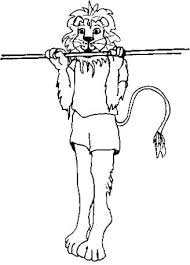
Flexibility
Body Composition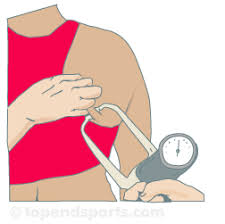
Balance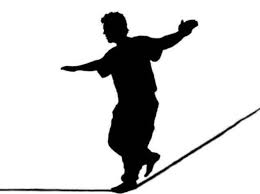
Coordination
Agility
Reaction Time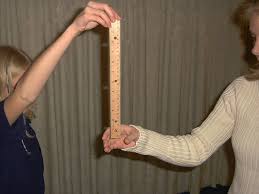
Speed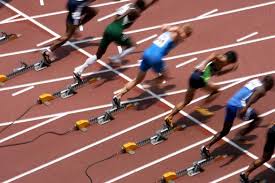
Power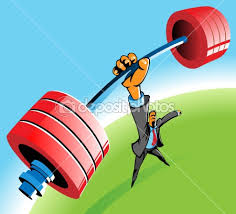
Muscular Strength
Muscular Endurance
Flexibility
Body Composition
Balance
Coordination
Agility
Reaction Time
Speed
Power
Friday, March 9, 2012
Field Experience Day 3 3rd Grade (2nd Class) 3/1/12
Communication with Colleagues, Others:
 Our final lesson of the day was a group of eager and well behaved 3rd graders that were even more excited that I was going to get to be their teacher. Since I did such a good job with the large group of mixed grades, the teacher asked me if I wanted to lead this lesson as well. I was more than willing and excited for such an awesome opportunity to further my skills. Before the lesson even began the classroom teacher came in and spoke with myself and the master teacher about one of the students who had recently lost his father. He told us that the student‘s mood and demeanor was still good, but he was really looking forward to our class, because it was his favorite time of the week.
Our final lesson of the day was a group of eager and well behaved 3rd graders that were even more excited that I was going to get to be their teacher. Since I did such a good job with the large group of mixed grades, the teacher asked me if I wanted to lead this lesson as well. I was more than willing and excited for such an awesome opportunity to further my skills. Before the lesson even began the classroom teacher came in and spoke with myself and the master teacher about one of the students who had recently lost his father. He told us that the student‘s mood and demeanor was still good, but he was really looking forward to our class, because it was his favorite time of the week.This news and the teachers concern pushed me even more to make this class as much fun for the student as I could. The lesson went as planned, and the students worked on their dribbling as well as their shooting, but this wasn’t the most important part of the lesson to me. Instead, the amount of enthusiasm and energy I put into it was what made the lesson stand out to me. After the lesson, the students were all smiling and the teacher thanked me for my hard work. It was a nice feeling knowing that I can help a student just by putting in that little bit of extra effort.
Field Experience Day 3 Kindergarten/1st Grade 3/1/12
Students with Special Needs:
This was a truly great experience, not only because I had a great time, but also I felt honored that the teacher had enough confidence in my abilities to give me the reigns of his class. It was a great learning experience, because while I have led many lessons at many different times, this was the first time that I was on my own in a public school as the sole teacher in charge. This motivated me even more to keep striving towards my future career.
Field Experience Day 3 3rd Grade 3/1/12
Skill Themes and Student Abilities:
Today was also the beginning of the basketball unit for the 3rd graders. Since these students have already had two years of basketball units, we were able to move more in depth on skills for their first day. We started with ball handling and dribbling, as these skills themes are critical to moving with the ball. We used the same cues as we did with the kindergarteners for dribbling and this was a good refresher for the students, because we had a lot of the students slapping at the ball rather than pushing it to the floor.
After allowing the students to practice dribbling around in the general space we brought the students back in to start working on shooting. We used the acronym B.E.E.F. for them to learn the cues for shooting properly. There were 11 baskets set up all around the gym at varying heights from 5’ all the way up to the standard 10’ basket. This gave students the opportunity to challenge themselves, yet have targets that were very attainable. The student’s abilities varied greatly, because there were students who were able to accurately shoot at the 10’ basket, while some struggled on the shorter hoops. We focused more on the students shooting using the proper technique rather than simply getting the ball into the hoop. I stressed the cues and this seemed to really help students to improve their shooting.
Field Experience Day 3 Kindergarten 3/1/12
Skill Themes and Student Abilities:
Today with my kindergarteners we were starting out the basketball unit. Our focus with this lesson was ball manipulation; to include dribbling while being stationary as well as moving through the general space. We quickly learned that some of the students in the class had never handled a ball before, and this really shocked me. I figured that at this point in the student’s lives they would have some experience with balls, but multiple students told me that they had never done anything like this before. While I was disturbed to hear this, it only motivated me further to help them strengthen their skills. We started on the ground just rolling the ball around their bodies on the floor as well as moving it around their bodies by holding it. This helped to familiarize them with the weight and feel of the ball.
After they became more comfortable moving the ball around we began with 3 simple cues to help them start dribbling. The cues were fingers, push, and waist. The cues really helped the students control the ball when dribbling while stationary, and while some still struggled they all slowly became more proficient. We then had them move around the gym dribbling and trying to maintain control while moving. This lesson taught me to never assume the abilities of the students, because you can never really know where they are in their ability level, or what sort of exposure they have.
Thursday, February 9, 2012
Field Experience Day 2 3rd Grade 2/9/12
Knowledge of Students
 |
| Image from |
The teacher that I work with has obviously been working with these students since the beginning of the year and now has a good grasp of their abilities and what they struggle with. The third graders that I observed overall do a fairly good job with the motor skills portion of the lesson, but they often struggle with working together and staying on task. With this knowledge, the teacher is able to strategically place certain students with one another to try and alleviate some of the off task behavior. He also knows which students are going to naturally be more athletically talented, and he will often pin point students that are doing well, but he does so in such a manner that they all get a chance, and feel important.
 |
| Image from |
I think that making students feel proud of their accomplishments is so critical and is often overlooked because there are things to get through. This teacher does a fantastic job of getting to know each student he has and prides himself on knowing their skill sets and attributes. Just being here for the second time I am starting to learn which students are going to need more one on one work, and which students you can depend on to stay on task and work hard. While there should never be favorites, I feel that this age group of students has been by far my favorite experiences, just from the joy and pleasure I see in their eyes when they finally get it.
Field Experience Day 2 Kindergarten 2/9/12
Curriculum and NYS standards
| Image from |
Today was my second day back with the kindergarteners and it was even better than the first. I took a more active role in the class today doing demonstrations, and working on skills with individual groups of students that were struggling. It was fantastic to hear how excited they were to be working with me and knowing my name from last week. Today’s lesson continued on with their tennis unit, and I really noticed that the teacher was doing a great job of seamlessly integrating the standards into the lesson. There were obviously psychomotor skills that were tested, seeing as this is the first interaction with long handled implements. The teacher even tested the students to attempt 10 consecutive hits back and forth with the balloons, and for some this was a challenge and others it was a bit easier.
They were also tested in the affective domain, because they were tasked with working with a partner to hit it back and forth and they must communicate with one another. They also were responsible for cleaning up the equipment at the end of the lesson. The cognitive domain was worked on as we walked around quizzing the students about the different racket piece names, and where they could go to practice their new tennis skills. Overall I felt that the lesson was smooth with minimal antics and a lot of time spent being active. I really am excited to go back each time, so this reaffirms that I want to be a teacher!
Subscribe to:
Posts (Atom)





